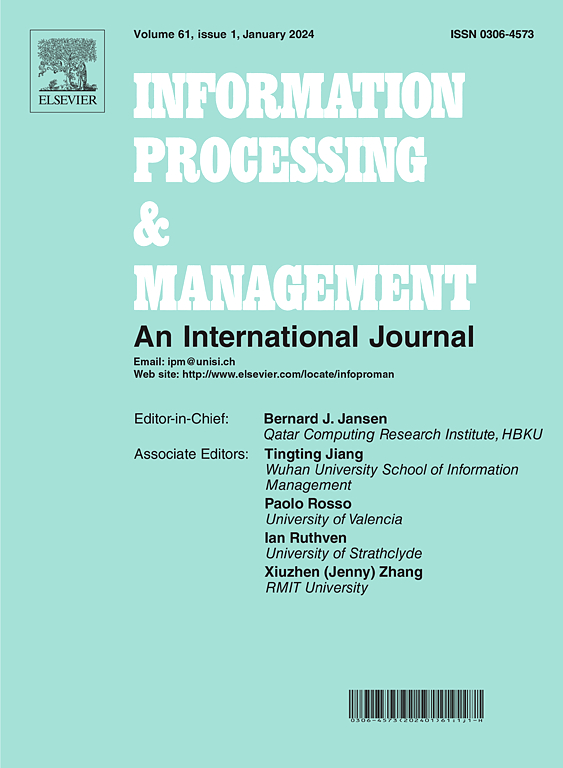Membership inference attacks via spatial projection-based relative information loss in MLaaS
IF 7.4
1区 管理学
Q1 COMPUTER SCIENCE, INFORMATION SYSTEMS
引用次数: 0
Abstract
Machine Learning as a Service (MLaaS) has significantly advanced data-driven decision-making and the development of intelligent applications. However, the privacy risks posed by membership inference attacks (MIAs) remain a critical concern. MIAs are primarily classified into score-based and perturbation-based attacks. The former relies on shadow data and models, which are difficult to obtain in practical applications, while the latter depends solely on perturbation distance, resulting in insufficient identification performance. To this end, we propose a Spatial Projection-based Relative Information Loss (SPRIL) MIA to ascertain the sample membership by flexibly controlling the size of perturbations in the noise space and integrating relative information loss. Firstly, we analyze the alterations in predicted probability distributions induced by adversarial perturbations and leverage these changes as pivotal features for membership identification. Secondly, we introduce a spatial projection technique that flexibly modulates the perturbation amplitude to accentuate the difference in probability distributions between member and non-member data. Thirdly, this quantifies the distribution difference by calculating relative information loss based on KL divergence to identify membership. SPRIL provides a solid method to assess the potential risks of DNN models in MLaaS and demonstrates its efficacy and precision in black-box and white-box settings. Finally, experimental results demonstrate the effectiveness of SPRIL across various datasets and model architectures. Notably, on the CIFAR-100 dataset, SPRIL achieves the highest attack accuracy and AUC, reaching 99.27% and 99.73%, respectively.
通过 MLaaS 中基于空间投影的相对信息损失进行成员推理攻击
机器学习即服务(MLaaS)极大地推动了数据驱动决策和智能应用的开发。然而,成员推理攻击(MIAs)带来的隐私风险仍是一个重要问题。成员推理攻击主要分为基于分数的攻击和基于扰动的攻击。前者依赖于影子数据和模型,在实际应用中很难获得;后者则完全依赖于扰动距离,导致识别性能不足。为此,我们提出了一种基于空间投影的相对信息损失(SPRIL)MIA,通过灵活控制噪声空间中扰动的大小和整合相对信息损失来确定样本的成员资格。首先,我们分析了对抗性扰动引起的预测概率分布的变化,并利用这些变化作为成员身份识别的关键特征。其次,我们引入了一种空间投影技术,可灵活调节扰动幅度,以突出成员数据和非成员数据之间概率分布的差异。第三,通过计算基于 KL 发散的相对信息损失来量化分布差异,从而识别成员身份。SPRIL 提供了一种可靠的方法来评估 DNN 模型在 MLaaS 中的潜在风险,并证明了其在黑盒和白盒设置中的有效性和精确性。最后,实验结果证明了 SPRIL 在各种数据集和模型架构中的有效性。值得注意的是,在 CIFAR-100 数据集上,SPRIL 实现了最高的攻击准确率和 AUC,分别达到 99.27% 和 99.73%。
本文章由计算机程序翻译,如有差异,请以英文原文为准。
求助全文
约1分钟内获得全文
求助全文
来源期刊

Information Processing & Management
工程技术-计算机:信息系统
CiteScore
17.00
自引率
11.60%
发文量
276
审稿时长
39 days
期刊介绍:
Information Processing and Management is dedicated to publishing cutting-edge original research at the convergence of computing and information science. Our scope encompasses theory, methods, and applications across various domains, including advertising, business, health, information science, information technology marketing, and social computing.
We aim to cater to the interests of both primary researchers and practitioners by offering an effective platform for the timely dissemination of advanced and topical issues in this interdisciplinary field. The journal places particular emphasis on original research articles, research survey articles, research method articles, and articles addressing critical applications of research. Join us in advancing knowledge and innovation at the intersection of computing and information science.
 求助内容:
求助内容: 应助结果提醒方式:
应助结果提醒方式:


